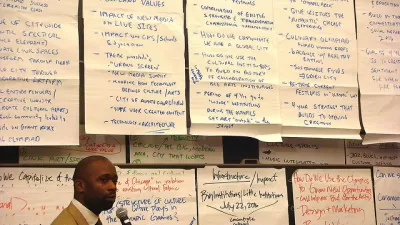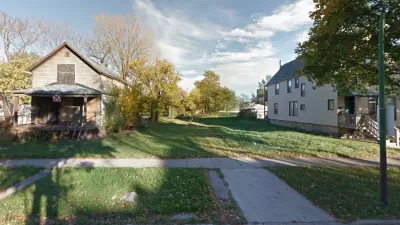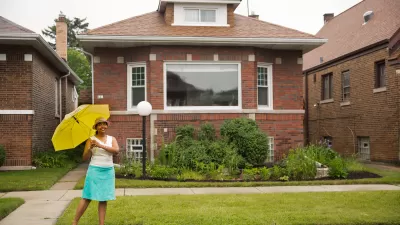Social scientists have a theory that a neighborhood's character shapes its economic future more than income levels and foreclosure rates. A tragedy to the community of Chatham on Chicago's South Side has tested this "neighborhood effect."
Chatham is a middle-class neighborhood that has remained economically stable for decades, while surrounded by impoverished communities. Researchers studying Chicago neighborhoods in 2010 predicted that "its strong identity and scores of active block groups had helped protect residents from larger economic threats and offered clues about how to preserve threatened urban communities all over the country." However, rising crime rates, foreclosures, and violent death of resident Thomas Wortham IV had some thinking that maybe it's time to move out of Chatham.
"The big change going on is that the grandparents are moving out, and some of the younger kids coming in here are picking up behaviors that you would never have seen in Chatham before," said Worlee Glover, a local salesman. The neighborhood was hit hard not only by the recession, which placed its foreclosure rate the 14th highest among 80 Chicago neighborhoods, but also by increasing incidents of violence in areas that used to be considered safe. For example, the mother of the victim said local Cole Park used to be "all picnics and playgrounds" but now resembles "a street party on most evenings, with teenagers coming just to hang out."
In their Chicago study, Robert J. Sampson and his team found that Chatham ranked No.1 on "how highly their neighbors valued and enforced respectful behavior from children" among all other similar neighborhoods and No. 2 on "how regularly people work together to achieve common goals" among black communities on the South Side. There are more than a hundred block groups in Chatham that monitor the neighborhood and organize events, and the uniformly small buildings allow residents to interact frequently with one another.
After Wortham's death, the community gathered together to "take back the park," and according to a study by Sampson, crime around Cole Park almost stopped in those following months. Old and new business are thriving, says Benedict Carey, and a group of residents have started an investment pool to buy up foreclosed houses and sell them to "people who will make good neighborhoods." There are encouraging signs of a rebound, concludes Carey, but "[t]he ultimate verdict, for Chatham and for the neighborhood effect, may lie in what the Worthams and people like them do in historically cohesive urban communities threatened by creeping poverty and violence."
FULL STORY: Diagnosis: Battered but Vibrant

Planetizen Federal Action Tracker
A weekly monitor of how Trump’s orders and actions are impacting planners and planning in America.

Maui's Vacation Rental Debate Turns Ugly
Verbal attacks, misinformation campaigns and fistfights plague a high-stakes debate to convert thousands of vacation rentals into long-term housing.

San Francisco Suspends Traffic Calming Amidst Record Deaths
Citing “a challenging fiscal landscape,” the city will cease the program on the heels of 42 traffic deaths, including 24 pedestrians.

Amtrak Rolls Out New Orleans to Alabama “Mardi Gras” Train
The new service will operate morning and evening departures between Mobile and New Orleans.

The Subversive Car-Free Guide to Trump's Great American Road Trip
Car-free ways to access Chicagoland’s best tourist attractions.

San Antonio and Austin are Fusing Into one Massive Megaregion
The region spanning the two central Texas cities is growing fast, posing challenges for local infrastructure and water supplies.
Urban Design for Planners 1: Software Tools
This six-course series explores essential urban design concepts using open source software and equips planners with the tools they need to participate fully in the urban design process.
Planning for Universal Design
Learn the tools for implementing Universal Design in planning regulations.
Heyer Gruel & Associates PA
JM Goldson LLC
Custer County Colorado
City of Camden Redevelopment Agency
City of Astoria
Transportation Research & Education Center (TREC) at Portland State University
Jefferson Parish Government
Camden Redevelopment Agency
City of Claremont





























